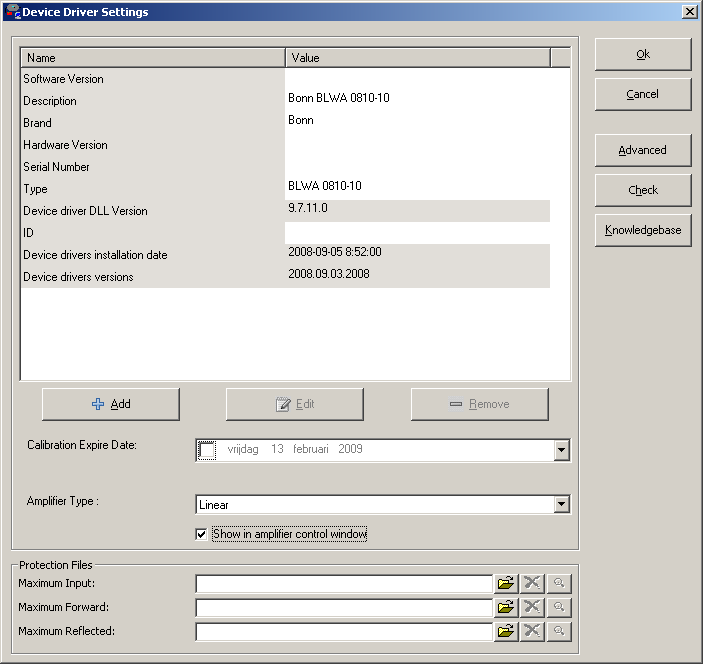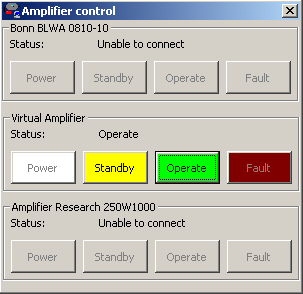Amplifier control
RadiMation® has got an amplifier control, the user can control the amplifiers in the test system during or outside a measurement. The amplifier equipment will be controlled in the background. This functionality is desired because some amplifiers take more then 5 minutes to heat up and be ready for use. With amplifier control you can already heat up the needed amplifier while doing a another test, this way you are not loosing time while waiting for the amplifier.
The amplifier control is also very useful in small tests, turning the amplifier on and off can cost a lot of time compared to the actual testing time. To reduce this time the user can turn the amplifier already in operate before starting the test, when the test has finished the amplifier is still kept in operate saving a lot of time.
With the amplifier control it is also possible to reset the amplifier when this is in an error state by an interlocked that tripped.
| Note: | The communication protocol of the amplifier has to support status polling and bus resets for this to work correctly.
When in doubt contact your reseller |
To add an amplifier to the amplifier control window select the "Show in amplifier window option" in the device driver configuration window.
For more information related to the settings window see chapter 15 of the manual.
Amplifier control window[edit]
After the amplifier has been added to the amplifier control window the user can change its state. An amplifier is locked when used during a test, when the test is in manual mode the amplifier can be controlled again. This is done to prevent accidentally turning off the amplifier RF power during a test.
In order to display the correct state of the amplifier RadiMation® polls the amplifier from time to time, all amplifiers in the amplifier control window are polled when no test is performed. This also done during the test but only with the amplifier used during the test. This is done to prevent time delays when an amplifier is not responding because it is turned off.

